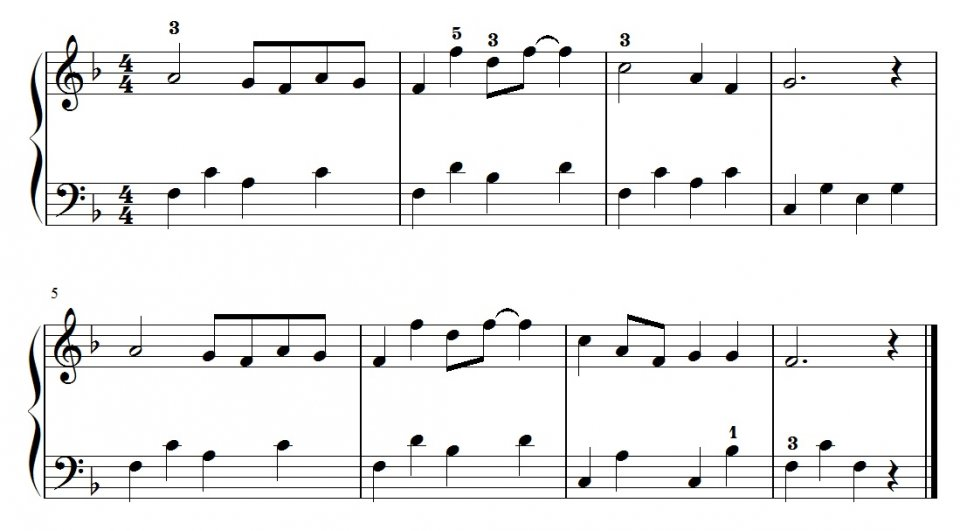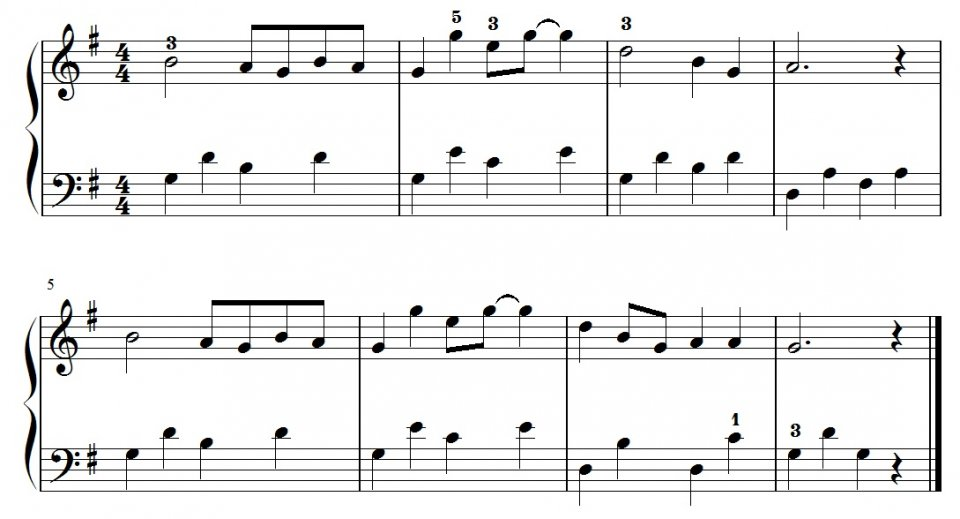Piano Music Theory: A Guide to Transposition
In our previous discussion, we examined how different keys and key signatures relate to one another (refer to "Piano Music Theory Lesson 3: Keys and Key Signatures"). But why are there so many keys in the first place? What motivates composers to write in different keys? And what exactly occurs when a piece is transposed?
Musical Effects
The primary change when a composition is transposed into another key is the overall pitch. (Some musicians believe certain keys possess distinct tonal colors, especially in systems like just intonation or Pythagorean tuning. However, in equal temperament, such differences are rarely noticeable to most listeners.)
So why bother with transposition? There are two main reasons:
1. To adapt the melody to fit a particular instrument’s or singer’s range.
2. To convert between different notational systems—like number notation and staff notation.
Let’s explore how transposition works within the framework of piano music theory.
Practical Methods
Many piano music theory books explain transposition using interval mapping. While this method is conceptually accurate, applying it note by note can feel tedious. A simpler approach breaks it down into two steps:
1. Adjust each note according to its position in the new key.
2. Adjust accidentals accordingly.
For instance, if you're changing a piece from C major to D major, you begin by shifting every piano scale note upward by a whole step. So, C becomes D, D becomes E, and so on.
C Major scale:

Transposed into D Major:

Let’s look at a simple melody in C major.

To transpose it to D major, move each note up a full step to preserve the melodic shape. This method reflects the pattern used in the new piano scale while maintaining the original rhythm and spacing between notes.

But why transpose upward and not downward? While either direction is valid, upward transposition typically results in smaller interval jumps and is thus more efficient. In general, changes of a perfect fourth or smaller are preferred, keeping the new key closely related to the original.
Managing Accidentals During Transposition
Accidentals—sharps and flats—need special attention during transposition.
Here’s how to handle them in two phases:

1. Shift all notes into the new key (e.g., from C major to D major).

2. Tackle the accidentals individually:
l If an accidental from the original key overlaps with a sharp in the new key, apply a natural sign to neutralize it.
l If the original note had a sharp and the new key adds another, a double sharp may be necessary.
l Notes without accidentals may remain unchanged if they don’t conflict with the new piano scale.
With these steps complete, your melody is fully transposed.
More Transposition Examples
Let’s put this into practice. Here is “Twinkle, Twinkle, Little Star” arranged in the key of C major:

Now here it is in B-flat major:

Another example: "Dear Homeland" starts in F major and is moved to G major:


By applying this process directly on the staff, you can shift any melody into a new key. With regular practice, transposing within different piano scale positions becomes second nature.
Transposing Between Major and Minor Keys
Most discussions about transposition involve major keys. However, the rule also applies to minor ones. The guideline is simple: transpose from major to major or minor to minor. This ensures the structure remains musically coherent.
That said, it's also possible to transpose a minor melody using a major framework, as long as both the original and new keys are built with the same interval sequence. This maintains consistent tonality and preserves the melodic intent across keys.
With a strong foundation in music theory, transposition becomes a practical tool—whether you're moving from C major to D major, adjusting vocal ranges, or navigating new areas of the piano scale.












